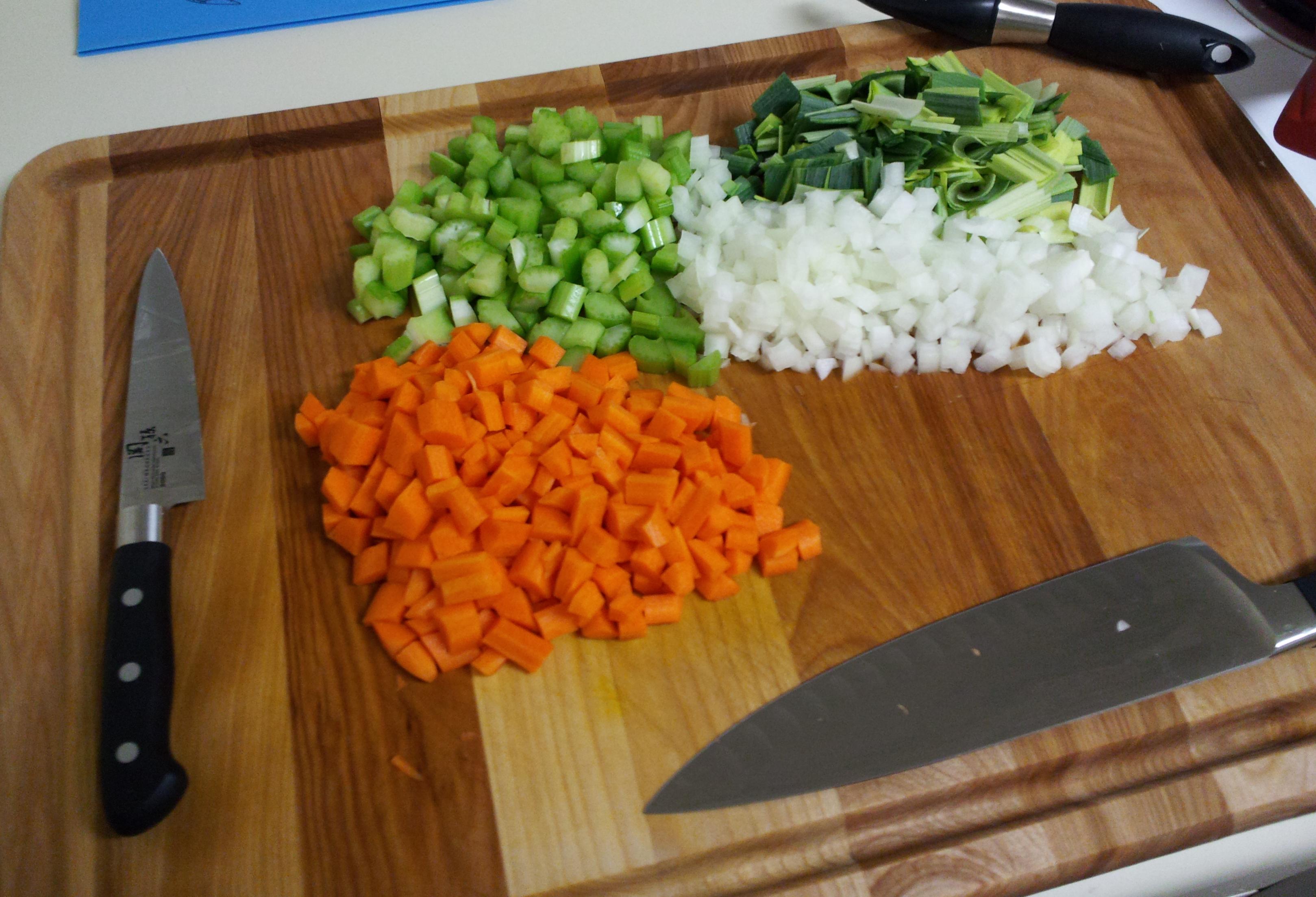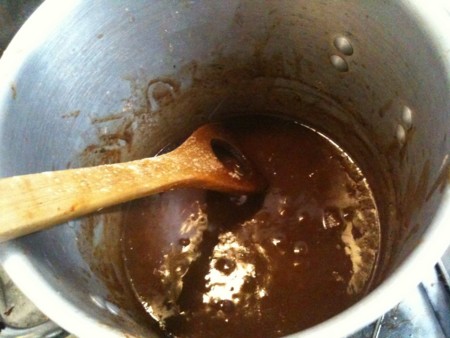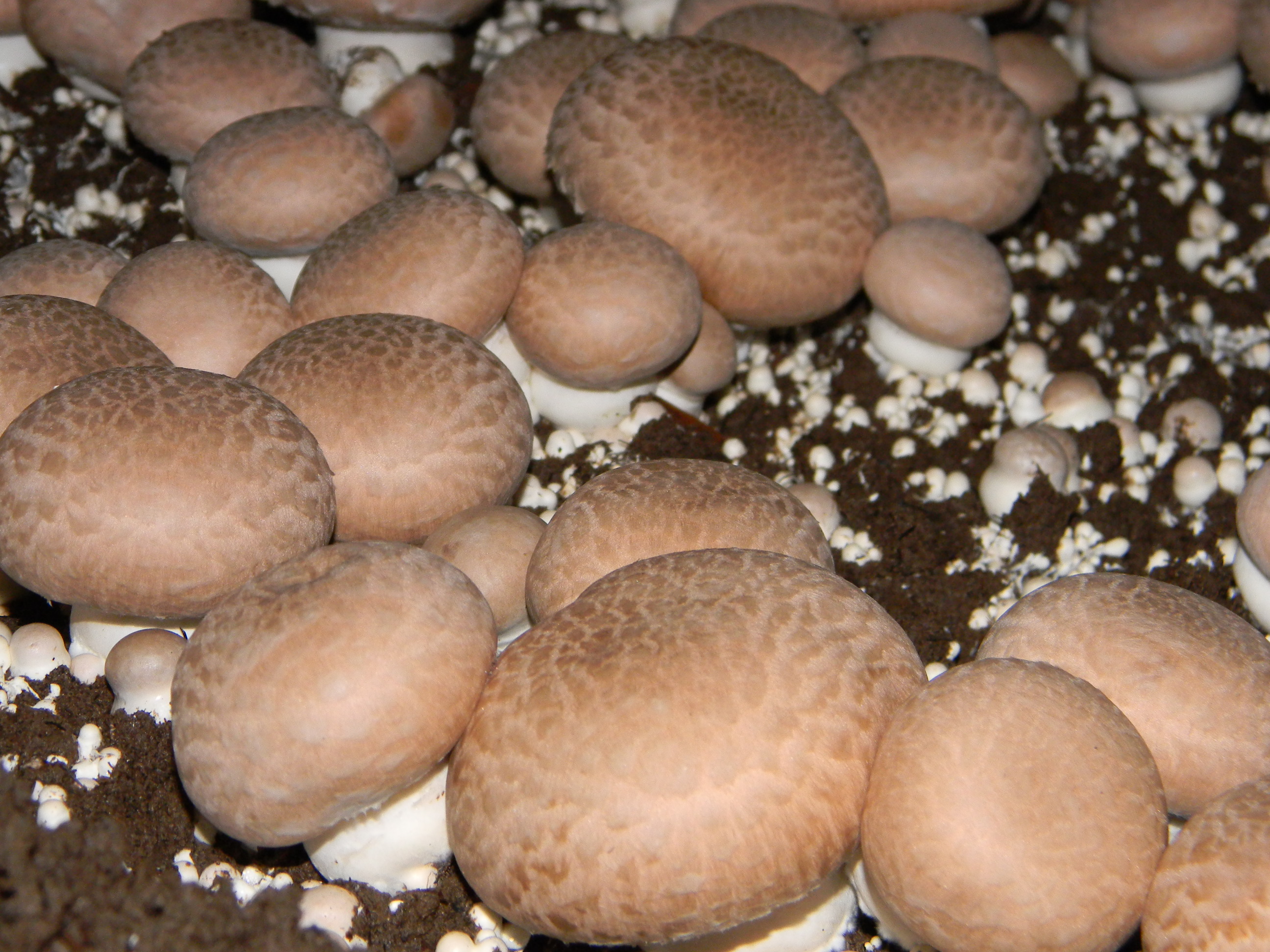|
Espagnole Sauce
Espagnole sauce () is a basic brown sauce, and is one of the mother sauces of classic French cooking. In the early 19th century the chef Antonin Carême included it in his list of the basic sauces of French cooking. In the early 20th century Auguste Escoffier named it as one of the five sauces at the core of France's cuisine. Etymology "Espagnole" is the French for "Spanish". Many French sauces have names of countries, such as hollandaise sauce or crème anglaise. Generally, the country's name is chosen as a tribute to a historical event or because the sauce's content evokes that country. In the case of Spanish sauce, it is thought that the name was given due to its red color, which is associated with Spain. Subsequently, several attempts were created to explain its name. It is said, for example, that Anne of Austria – who despite her name was Spanish – introduced cooks from Spain to the kitchens of the French court and that her cooks improved the French brown sauce by ... [...More Info...] [...Related Items...] OR: [Wikipedia] [Google] [Baidu] |
French Cuisine
French cuisine is the cooking traditions and practices of France. In the 14th century, Guillaume Tirel, a Court (royal), court chef known as "Taillevent", wrote ''Le Viandier'', one of the earliest recipe collections of medieval France. In the 17th and 18th centuries, chefs François Pierre La Varenne and Marie-Antoine Carême spearheaded movements that shifted French cooking away from its foreign influences and developed France's own indigenous style. French cheese, Cheese and French wine, wine are a major part of the cuisine. They play different roles regionally and nationally, with many variations and ''appellation d'origine contrôlée'' (AOC) (regulated appellation) laws. Culinary tourism and the ''Guide Michelin'' helped to acquaint commoners with the ''cuisine bourgeoise'' of the urban elites and the peasant cuisine of the French countryside starting in the 20th century. Many dishes that were once regional have proliferated in variations across the country. Knowledg ... [...More Info...] [...Related Items...] OR: [Wikipedia] [Google] [Baidu] |
Mirepoix
A mirepoix ( , ) is a mixture of diced vegetables cooked with fat (usually butter) for a long time on low heat without coloring or browning. The ingredients are not sautéed or otherwise hard-cooked, because the intention is to sweeten rather than caramelize them. Historically including various meats before settling at its current meaning as a vegetable base, mirepoix is a long-standing part of French cuisine and is the flavor base for a wide variety of dishes, including stock (food), stocks, soups, stews, and sauces. When the mirepoix is not precooked, the constituent vegetables may be cut to a larger size, depending on the overall cooking time for the dish. Usually the vegetable mixture is onions, carrots, and celery (either common 'Pascal' celery or celeriac), with the traditional ratio being 2:1:1—two parts onion, one part carrot, and one part celery. Further cooking, with the addition of tomato purée, creates a darkened brown mixture called . Similar flavor bases includ ... [...More Info...] [...Related Items...] OR: [Wikipedia] [Google] [Baidu] |
French Sauces
French may refer to: * Something of, from, or related to France ** French language, which originated in France ** French people, a nation and ethnic group ** French cuisine, cooking traditions and practices Arts and media * The French (band), a British rock band * "French" (episode), a live-action episode of ''The Super Mario Bros. Super Show!'' * ''Française'' (film), a 2008 film * French Stewart (born 1964), American actor Other uses * French (surname), a surname (including a list of people with the name) * French (tunic), a type of military jacket or tunic * French's, an American brand of mustard condiment * French (catheter scale), a unit of measurement * French Defence, a chess opening * French kiss, a type of kiss See also * France (other) * Franch, a surname * French Revolution (other) * French River (other), several rivers and other places * Frenching (other) Frenching may refer to: * Frenching (automobile), recessing or mou ... [...More Info...] [...Related Items...] OR: [Wikipedia] [Google] [Baidu] |
Brown Sauces
Brown is a color. It can be considered a composite color, but it is mainly a darker shade of orange. In the CMYK color model used in printing and painting, brown is usually made by combining the colors orange and black. In the RGB color model used to project colors onto television screens and computer monitors, brown combines red and green. The color brown is seen widely in nature, wood, soil, human hair color, eye color and skin pigmentation. Brown is the color of dark wood or rich soil. In the RYB color model, brown is made by mixing the three primary colors, red, yellow, and blue. According to public opinion surveys in Europe and the United States, brown is the least favorite color of the public; it is often associated with fecal matter, plainness, the rustic, although it does also have positive associations, including baking, warmth, wildlife, the autumn and music. Etymology The term is from Old English , in origin for any dusky or dark shade of color. The first recor ... [...More Info...] [...Related Items...] OR: [Wikipedia] [Google] [Baidu] |
Food And Drink Introduced In The 17th Century
Food is any substance consumed by an organism for Nutrient, nutritional support. Food is usually of plant, animal, or Fungus, fungal origin and contains essential nutrients such as carbohydrates, fats, protein (nutrient), proteins, vitamins, or Mineral (nutrient), minerals. The substance is Ingestion, ingested by an organism and assimilated by the organism's Cell (biology), cells to provide energy, maintain life, or stimulate growth. Different species of animals have different List of feeding behaviours, feeding behaviours that satisfy the needs of their metabolisms and have evolved to fill a specific ecological niche within specific geographical contexts. Omnivore, Omnivorous humans are highly adaptable and have adapted to obtaining food in many different ecosystems. Humans generally use cooking to prepare food for consumption. The majority of the food energy required is supplied by the industrial food industry, which produces food through Intensive farming, intensive agricu ... [...More Info...] [...Related Items...] OR: [Wikipedia] [Google] [Baidu] |
Demi-glace
Demi-glace (, 'half glaze') is a rich brown sauce in French cuisine used by itself or as a base for other sauces. The term comes from the French word ''glace'', which, when used in reference to a sauce, means "icing" or "glaze." It is traditionally made by combining one part espagnole sauce and one part brown stock. The sauce is then reduced by half, strained of any leftover impurities, and finished with a sherry wine. Common variants of demi-glace use a 1:1 mixture of beef or chicken stock to sauce espagnole; these are referred to as "beef demi-glace" (''demi-glace au bœuf'') or "chicken demi-glace" (''demi-glace au poulet''). Preparation Due to the considerable effort involved in making the traditional demi-glace, chefs commonly substitute a simple ''jus lié'' of veal stock or to create a simulated version, which the American cookbook author Julia Child referred to as a "semi-demi-glace" (i.e. sans espagnole sauce). See also * Gypsy sauce * List of sauces * Mea ... [...More Info...] [...Related Items...] OR: [Wikipedia] [Google] [Baidu] |
Sauce Robert
Sauce Robert () is a brown mustard sauce and one of the ''small sauces'', or compound sauces, derived from the classic French demi-glace, which in turn is derived from espagnole sauce, one of the five mother sauces in French cuisine ( béchamel, velouté, espagnole, sauce tomate, and hollandaise). Sauce Robert is made from chopped onions cooked in butter without color, a reduction of white wine, pepper, an addition of demi-glace and is finished with mustard. It is suited to red meat, specifically pork, typically grilled pork.Escoffier, p. 31 History Sauce Robert is one of the earliest compound sauces on record. Of the 78 compound sauces systematized by Marie-Antoine Carême in the early 19th century, only two—sauce Robert and remoulade—were present in much older cookbooks, such as François Massialot's ''Le Cuisinier Roial et Bourgeois'', from 1691.Sokolov, Raymond. "The Saucier's Apprentice", ''A Brief History of French Sauces''. pages 5–7. Alfred A. Knopf, Inc. 19 ... [...More Info...] [...Related Items...] OR: [Wikipedia] [Google] [Baidu] |
Chasseur (sauce)
Sauce chasseur (, "hunter's sauce") is a brown sauce used in French cuisine. It is typically made using demi-glace or espagnole sauce (among the five mother sauces) as a base, and includes mushrooms and shallots or onions. It may also include tomatoes and a finishing of ''fines herbes''. History The name is derived from the French word for "hunter", alluding to the traditional pairings with venison, rabbit, wildfowl, and other game meats. According to Alan Davidson in ''The Oxford Companion to Food'', sauce chasseur is "supposed to be like what hunters would put on their meat after the hunt". A culinary term, meaning "huntsmen-style" occurs in several languages and usually indicates the presence of forest mushrooms. The Italian equivalent is , the Spanish and the Polish . Some nineteenth-century food historians suggested that sauce chasseur was invented by Philippe de Mornay, whom they also credited with inventing Mornay sauce and sauce, but there is no evidence for this. ... [...More Info...] [...Related Items...] OR: [Wikipedia] [Google] [Baidu] |
Agaricus Bisporus
''Agaricus bisporus'', commonly known as the cultivated mushroom, is a basidiomycete mushroom native to grasslands in Eurasia and North America. It is cultivated in more than 70 countries and is one of the most commonly and widely consumed mushrooms in the world. It has two color states while immature – white and brown – both of which have various names, with additional names for the mature state, such as chestnut, portobello, portabellini, button and champignon de Paris. ''A. bisporus'' has some poisonous lookalikes in the wild, such as '' Entoloma sinuatum''. Description The pileus or cap of the original wild species is a pale grey-brown, with broad, flat scales on a paler background and fading toward the margins. It is first hemispherical before flattening out with maturity, typically measuring in diameter. The narrow, crowded gills are free and initially pink, then red-brown, and finally a dark brown with a whitish edge from the cheilocystidia. The cylindrical ... [...More Info...] [...Related Items...] OR: [Wikipedia] [Google] [Baidu] |
Bordelaise Sauce
Bordelaise sauce () is a classic French sauce named after the Bordeaux region of France, which is famous for its wine. The sauce is made with dry red wine, bone marrow, butter, shallots and sauce demi-glace. ''Sauce marchand de vin'' ("wine-merchant's sauce") is a similar designation. Traditionally, bordelaise sauce is served with grilled beef or steak, though it can also be served with other meats that pair well with red wine demi-glace–based sauces. New Orleans bordelaise A bordelaise sauce in traditional New Orleans-style Louisiana Creole cuisine is different from the French classical version, although both are available in the city. The basic flavor is garlic rather than red wine and bone marrow. Another sauce called "bordelaise" in New Orleans consists of butter, olive oil, shallots, parsley Parsley, or garden parsley (''Petroselinum crispum''), is a species of flowering plant in the family Apiaceae that is native to Greece, Morocco and the former Yugoslavia. It h ... [...More Info...] [...Related Items...] OR: [Wikipedia] [Google] [Baidu] |
Bigarade Sauce
Bigarade sauce is an orange sauce prepared on the French dish duck á l'orange. It is based on the gastrique, a caramelized sugar mixed with white vinegar. See also * List of sauces The following is a list of notable Culinary art, culinary and prepared sauces used in cooking and food service. General * * * * * * * * * * * * * * * * * * * – Creamy sauce accompanies with seafood * * * * * * ... References French sauces {{condiment-stub ... [...More Info...] [...Related Items...] OR: [Wikipedia] [Google] [Baidu] |





